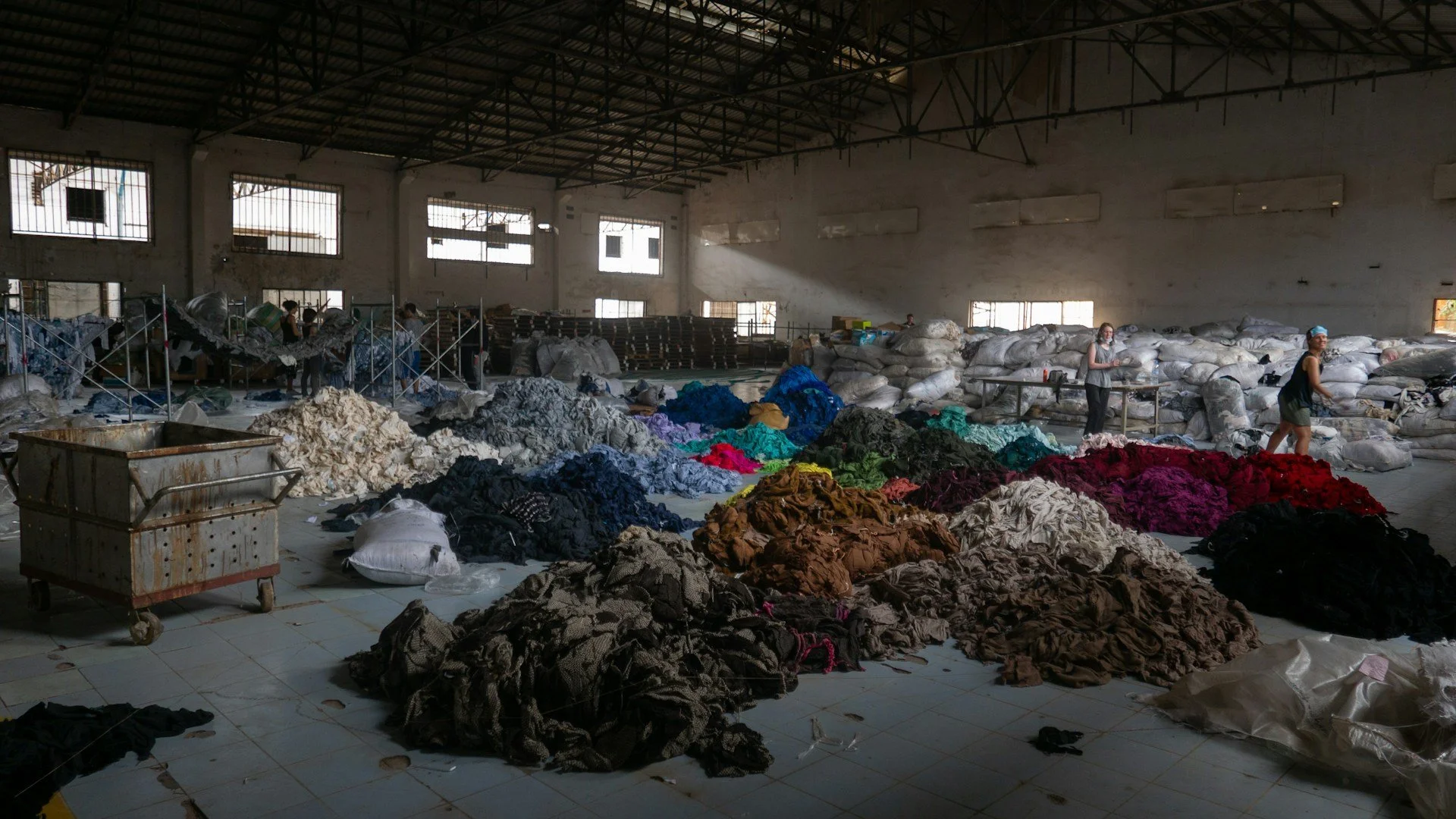At What Cost? Fashion Fashion’s Environmental Impact
textile factory sorting through textile waste / unsplash
The Alarming Impact of Fast Fashion on Our Planet and Society 🌍👗
Fast fashion has reshaped the fashion industry with its affordable, trendy clothing, enabling consumers to keep up with the latest styles without breaking the bank. However, the hidden costs of these conveniences are profound and far-reaching, impacting our environment and societies globally.
Understanding Fast Fashion 🤔
Originating in the early 1990s with brands like Zara landing in New York, fast fashion has been characterized by its rapid production processes that mimic the latest catwalk trends and deliver new styles to stores quickly to maximize on current fashions. This model focuses on speeding up the design, production, and marketing stages to meet the constant demand for new, inexpensive clothing.
Environmental Catastrophe 🌊
Fast fashion stands as the second-largest polluter of water globally, just behind agriculture. The industry is notorious for its significant water consumption, needing about 700 gallons to produce one cotton shirt and 2,000 gallons for a pair of jeans. Moreover, textile dyeing is the second-largest water polluter, with residues often discharged into rivers, affecting both ecosystems and human communities.
Microplastic pollution is another grave issue. A 2017 report estimated that 35% of all ocean microplastics originate from the laundering of synthetic textiles like polyester. Each wash and subsequent disposal of these materials contribute to the ongoing pollution crisis affecting marine life and water quality.
The carbon footprint of fast fashion is equally troubling. It is responsible for about 10% of global greenhouse gas emissions, more than all international flights and maritime shipping combined. The reliance on fossil fuels for synthetic fibers production and the extensive global supply chain exacerbate this impact, making fast fashion a significant contributor to global warming.
Societal Impacts 👥
Beyond environmental concerns, fast fashion also poses severe social challenges, particularly in the exploitation of labor in developing countries. The industry predominantly employs young women under the age of 24, who work in precarious conditions with minimal pay. The catastrophic collapse of the Rana Plaza factory in Bangladesh in 2013, which killed over 1,000 workers, highlights the dangerous working conditions prevalent in the industry.
Potential Solutions: Embracing Slow Fashion 🐌👚
Slow fashion offers a sustainable alternative, advocating for reduced production, extensive use of eco-friendly materials, and fair labor practices. This approach encourages consumers to buy less, choose better-quality items, and extend the lifecycle of their garments.
Quick Facts to Consider 📊
Water Usage: The fashion industry consumes 93 billion cubic meters of water annually—enough for five million people's needs. 💧
Carbon Emissions: Fashion production generates 10% of global carbon emissions, surpassing the pollution from international flights and maritime shipping. ✈️🚢
Waste: Annually, 85% of textiles end up in landfills or are incinerated. 🗑️
Microplastics: Washing synthetic textiles releases microplastics equivalent to 50 billion plastic bottles into the ocean each year. 🌊
Human Cost: Approximately 80% of garment workers are women aged 18-24, often working in unsafe conditions. 👷♀️
Final Thoughts 💡
As consumers, it's crucial to recognize the impact of our purchasing choices. Supporting sustainable brands, opting for second-hand or vintage clothing, and reducing overall consumption can significantly mitigate the adverse effects of fast fashion. It's not only about fashion choices but also about fostering an ethical and sustainable world.


